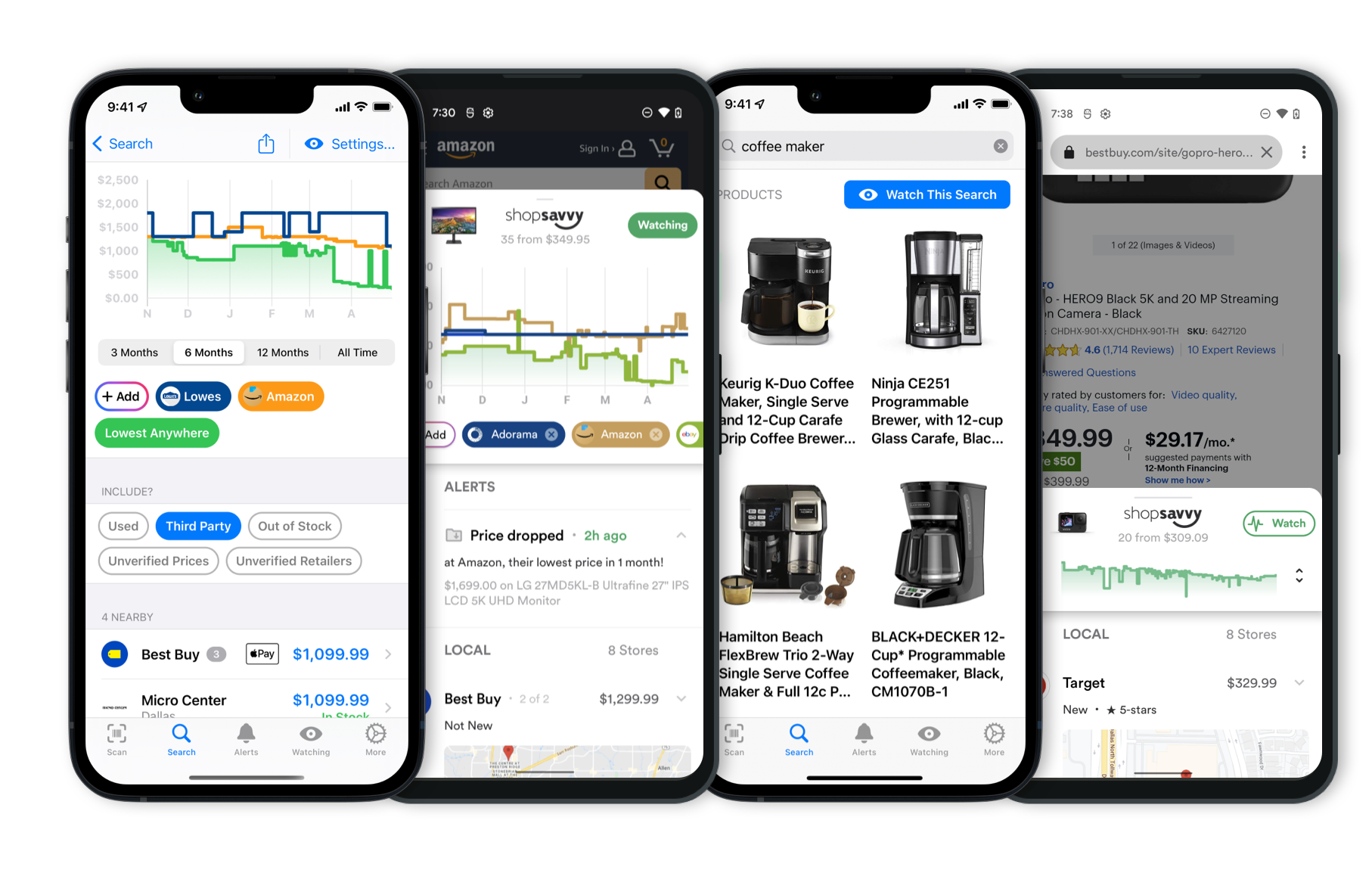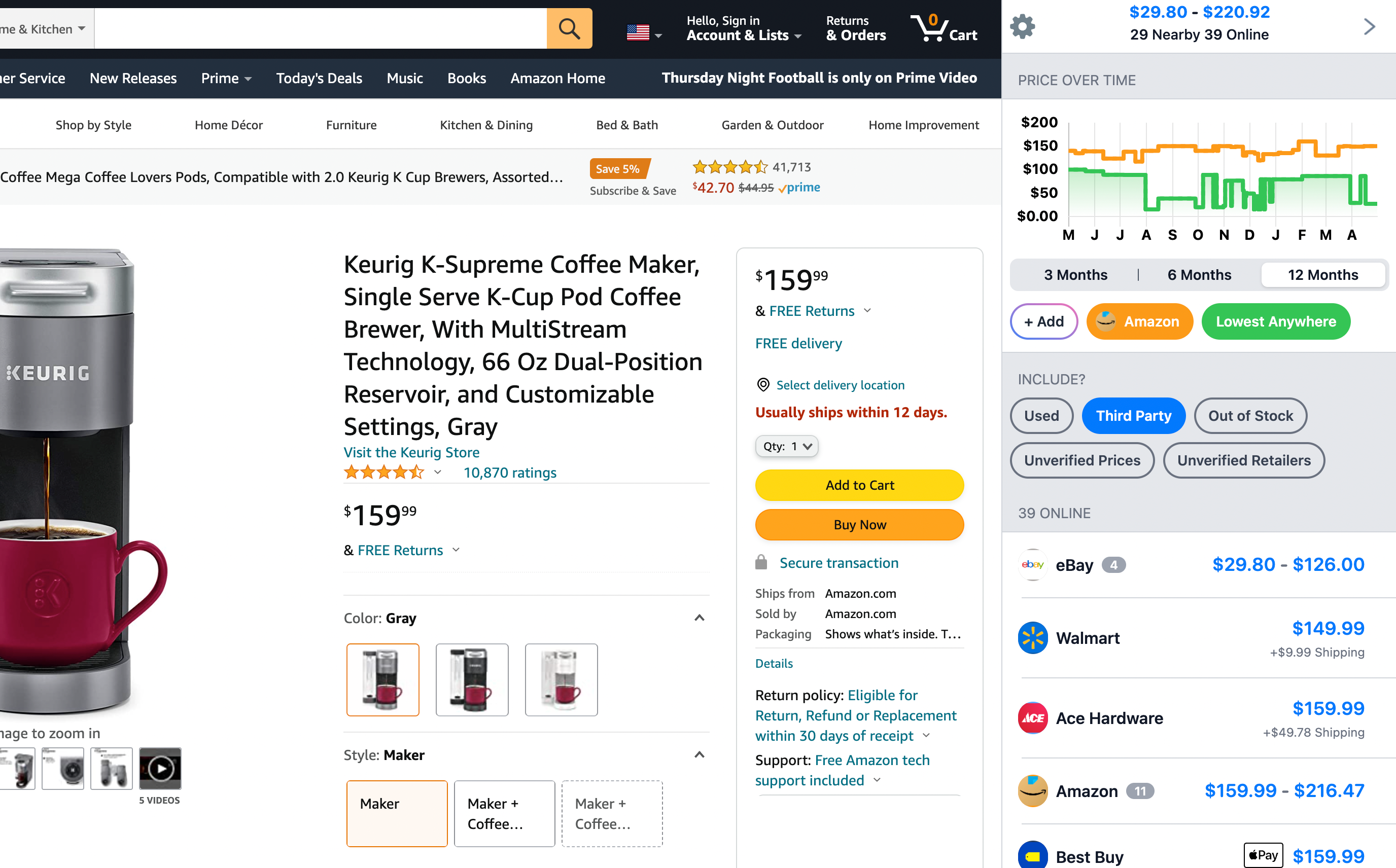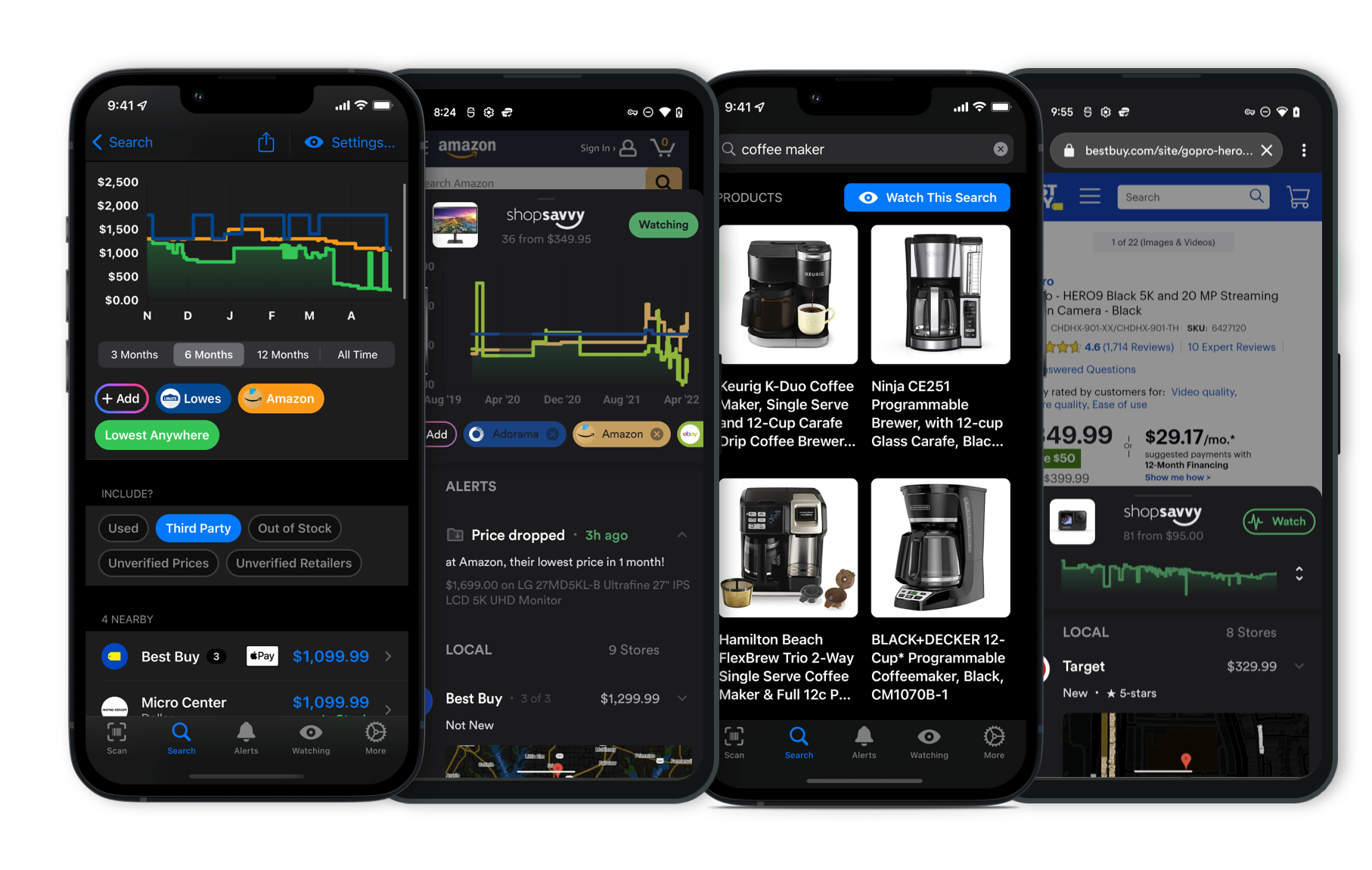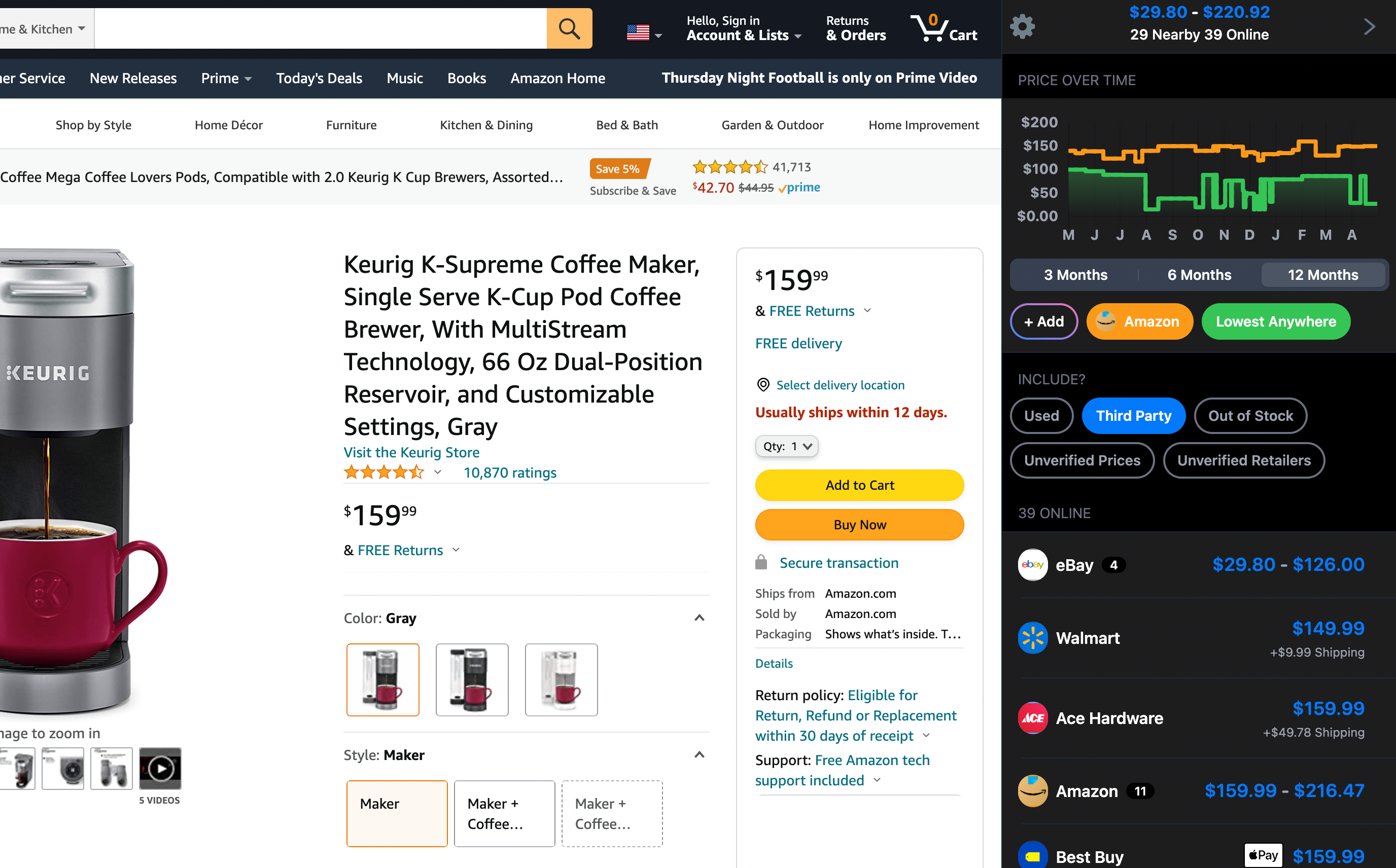Latest Answers for the Product (Page 59)
The ThinkFun Gravity Maze comes with 60 challenge cards, according to the manufacturer's description. These cards have different difficulty levels, making the game interesting and educational for both kids and adults.
It's a neat way to boost logical reasoning, spatial awareness, and planning skills—stuff that's pretty important for STEM learning.
From our research, it seems like many people think highly of Gravity Maze for its educational benefits. Professional reviews say it does a great job of building skills needed for understanding STEM subjects.
The game has you putting together a marble run that uses gravity, which makes learning feel a lot like play.
Parents and teachers often praise it for being both fun and good for cognitive development. Kids seem to really like figuring out how to get the marble from start to finish, and it gets them thinking strategically and solving problems on their own.
It's mostly straightforward to use, but some folks mentioned that younger kids might need a bit of help fitting the pieces together. Still, most feedback is super positive, with many finding it a fun and engaging way to learn.
So yeah, the ThinkFun Gravity Maze not only has 60 diverse challenge cards to keep you going but also doubles as an educational tool that mixes learning with play.
The HESTYA 4 Pack Mosquito Net Mesh doesn't specify exact dimensions, but it's designed to fit over hats comfortably, including wide-brim hats and baseball caps, thanks to an elastic band that holds it in place. This makes it a handy choice for outdoor activities.
From what we've gathered, people generally like how light and effective these nets are, especially for hiking, backpacking, and camping. They're easy to carry and use, allowing you to enjoy the outdoors without being annoyed by bugs.
The net also has a drawstring for adjusting the fit and keeping insects out, which seems to be a feature people appreciate a lot. Plus, each net comes with a carry bag, which makes them easy to pack and take along, perfect for any outdoor adventure without resorting to chemical sprays.
Essentially, they seem to be a good option for anyone wanting to enjoy the outdoors without getting eaten alive by mosquitoes or other pests.
Hey! If you're considering the RICOH THETA Z1 51GB for real estate photography, it’s definitely worth a look, especially for capturing 360-degree video tours. With 4K resolution at 3840 x 1920 pixels, it can really make properties shine with crisp and clear visuals.
The camera's got built-in image stabilization, which is a huge plus for smooth video, as the product description highlights. This feature can help you achieve those professional-looking walkthroughs you're aiming for.
Another cool thing is the 3-axis rotation correction. It helps keep your videos steady and can minimize the annoying motion blur that happens when you're moving through rooms or angling for the perfect shot.
Also, something I found interesting from our research is that the camera includes a four-channel microphone for capturing immersive 360-degree sound, adding an extra layer of realism to your virtual tours.
However, a heads-up about the battery life—some folks have mentioned it drains a bit quickly, especially during longer video sessions. If you're planning extended shoots, think about having a portable charger or power bank on hand to keep it running smoothly.
Overall, despite needing to manage battery concerns, the RICOH THETA Z1 51GB packs some great features for creating engaging virtual tours in real estate photography.
With a bit of prep, it could be a great tool for you!
The Roland FP-10 sounds pretty great, especially for an entry-level digital piano. It's got Roland's SuperNATURAL sound engine, which gives it a rich and vibrant sound that's reminiscent of an acoustic piano.
Our research shows that a lot of folks really like how it captures the subtle tones of an acoustic. It's a solid pick for beginners or anyone wanting that classic piano sound without worrying about the upkeep of a real one. Plus, the PHA-4 Standard keybed makes playing feel pretty authentic for those home practice sessions.
But here's something to keep in mind: the FP-10 is really aimed at home use, so its connectivity options are pretty basic. There's no line-out jack if you're thinking of using it for performances or with pro audio gear. It does have a 3.5mm headphone jack that works fine for home practice, but you might need an adapter if you're planning to connect to a more complex audio setup.
The lack of a traditional line-out is part of its entry-level charm—it keeps the FP-10 affordable and compact, making it ideal for those just starting out or musicians who prefer to practice quietly with headphones and don't have tons of space.
If you're looking for more advanced audio output options, you might want to check out something like the Roland FP-30. It offers more features like dual headphone jacks and better speaker outputs.
But if you love the FP-10's sound and feel, you could always use an adapter from the headphone jack to hook it up to an external mixer or amp.
All in all, the FP-10 is a great choice for its realistic piano sound and is perfect for anyone practicing at home on a budget.
Hey there! If you're wondering about the accuracy of the ennoLogic eT650D Temperature Gun, it seems like it does the job pretty well. This tool is all about measuring surface temperatures using infrared tech.
Just a heads-up—it’s not made for taking body temperatures. It's more suited for things like industrial, automotive, and cooking uses.
From what we've gathered, the gun covers a wide range of temperatures, from -58°F to 1202°F (-50°C to 650°C), which is pretty handy whether you're checking on your car engine or making sure your food's cooked right.
The manufacturer mentions that it comes with dual lasers, which help you aim accurately. Also, its adjustable emissivity setting is cool because it lets you get accurate readings on different materials—great if you often switch between checking metal and wood.
This thing packs some neat features like a scanning mode to show minimum, maximum, and average temperatures, and it even has alarms for when temperatures get too high or too low. The design is ergonomic and it responds fast, so it's practical whether you're at home or on the job.
According to what we've found, people using it for things like HVAC inspections, car diagnostics, or cooking generally find it to be solid and dependable. This lines up with what the specs promise.
Just keep in mind, if you're after a thermometer for human temperatures, you'll want something else. This is strictly for surface temps and isn’t meant for medical use—it might not give you the right readings for that.
So, if what you need matches what this device offers, the ennoLogic eT650D could be a good choice for you!
Does the Davis Vantage Pro2 include internet connectivity out of the box?
So, the Davis Vantage Pro2 Weather Station is a pretty solid choice for those who love tracking weather data accurately, but it doesn't come with internet connectivity right out of the box.
If accessing your weather data online is something you want, you'll need to spend a bit more to get the Davis WeatherLinkIP or a similar device.
These extras aren't included when you first buy the Vantage Pro2, but they're important if you want to send your weather info to platforms like Weather Underground or WeatherLink.com.
To get it all set up, you have to connect the WeatherLinkIP to your router. It might be a bit tricky at first because there's some software and network settings to configure.
But once you push through that setup, you'll have the option to upload data automatically—or manually if you prefer—and access more features with additional modules.
Getting internet connectivity might feel like a bit of a headache, especially since the station has a higher price tag and you'd expect it to be included.
But according to our research, the extra investment pays off for many who enjoy professional-level accuracy and updates every 2.5 seconds.
So, if having your data online is crucial for you, don't forget to budget for that extra equipment like the WeatherLinkIP.
While it might be a bit of a hassle, users often find the Vantage Pro2's performance and flexibility make this extra step worth it.
So, talking about the wireless range for the Davis Vantage Pro2 weather station, here's the scoop: The manufacturer says it should reach up to 1000 feet in clear line of sight.
But according to our research, this can sometimes be shorter than expected. Some folks have mentioned struggles with the range, with one person noting that keeping a strong signal beyond 700 feet was tricky, leading them to use a repeater.
So, if you're planning on setting up your console more than 500 feet from the sensors, it might be wise to think about getting a repeater for better reliability.
Setting it up isn't super complicated, but some planning is needed, especially if you're putting sensors higher up or further away. The manufacturer describes the station as having separate parts like an anemometer, rain gauge, and thermometer, which means you can place them in spots that get the best readings.
On a side note, there have been some reports of issues, particularly with the console needing frequent resets due to syncing problems, even when it was just 75 feet away with nothing in between.
So, it's worth testing your setup to make sure it works well in your specific location and conditions.
In a nutshell, the Davis Vantage Pro2 is solid, but just be ready to deal with range considerations and tailor it to your setup to get the most out of it.
How accurate is the Davis Vantage Pro2 for measuring temperature and other weather data?
If you're curious about the Davis Vantage Pro2's accuracy, it's generally quite solid for temperature and other weather measurements. It's pretty popular among both weather enthusiasts and professionals because it reliably collects a wide range of data—everything from temperature and humidity to wind speed and rainfall.
Temperature and Humidity Precision
For temperature, the Vantage Pro2 is accurate to about ±1°F, and for humidity, it's around ±2% accurate for outdoor readings, according to our research. That level of precision is something people really appreciate, especially if you want detailed and reliable weather information.
Transmission Range and Connectivity
When it comes to wireless transmission, the Vantage Pro2 can theoretically reach up to 1000 feet, but real-world conditions with obstacles usually mean it's more in the 200 to 400 feet range. That's pretty standard for these kinds of devices.
One downside is the internet connectivity. To get data onto sites like WeatherLink.com or Weather Underground, you'll need to buy the WeatherLinkIP component separately. It's an extra cost, and the lack of built-in Wi-Fi might feel a bit old-school to those expecting easier internet options.
Display and User Experience
The display console does what it's supposed to, giving you detailed data graphs for serious weather analysis. Some folks have mentioned that it could use a modern update, but it still gets the job done if you're into serious weather monitoring.
Final Considerations
Overall, the Vantage Pro2 is known for being accurate and durable, making it a good pick for anyone really into weather tracking.
Sure, a few updates could make it more user-friendly, but its main functions are rock solid. If you're after an accurate, reliable weather station and don't mind spending a bit more for better internet features, it's definitely worth checking out.
The AnkerMake M5C 3D Printer is pretty impressive when it comes to speed. It can hit up to 500 mm/s, which is quite fast for 3D printing. What’s cool is that even at these speeds, the printer still manages to keep the precision in check.
The printer's all-metal hotend is a nice touch—it can reach temperatures up to 300°C. This means you're not stuck with one type of filament; you can use things like PLA, ABS, and PETG, which is awesome if you like to switch things up based on what you're making.
Setting it up is a breeze, too. From what we've found, getting it ready usually takes less than 15 minutes. And the 7×7 auto-leveling system is super helpful because you don't have to keep adjusting the print bed manually all the time.
Do keep in mind that the AnkerMake M5C relies on their app since there's no built-in screen. So if your internet acts up, it might be a bit tricky.
Plus, be prepared for the occasional firmware update causing minor glitches like layer shifts or pauses, but these usually get resolved.
In a nutshell, the M5C is fast and versatile, appealing to both newbies and experienced 3D printing folks. Just remember, the reliance on the app might take a bit of getting used to, but if you're okay with that, it should be a great addition to your projects.
The Presto Poplite Hot Air Popcorn Popper can crank out up to 18 cups of popcorn in one round, according to the manufacturer's product description. That's plenty for a movie night or a family gathering.
What's cool about this popper is that it uses hot air instead of oil, so you're getting a lighter snack but still with good flavor. Our research found it tends to pop most of the kernels, so you get a good amount of popcorn.
One thing to keep in mind, though, is that it doesn't have an on/off switch. It kicks into gear as soon as you plug it in and stops when you unplug it.
We found some folks mention that using a power adapter with a switch can make things a bit easier and safer.
In general, even without an on/off switch, it seems people manage fine and think the benefits outweigh this minor inconvenience. If a built-in switch is a dealbreaker, there are other options out there.
But if you want a quick and easy way to make popcorn without oil, the Presto Poplite seems like a solid pick.
 Download ShopSavvy App
Download ShopSavvy AppCompare prices for anything in real-time, set price alerts, watch for deals by keyword, and much more
 Install ShopSavvy Browser Extension
Install ShopSavvy Browser ExtensionCompare and track prices automatically while you shop online at thousands of websites.
Footer 1
Published
Subscribe for Updates
Get the latest news, and updates on ShopSavvy. You'll be glad you did!




